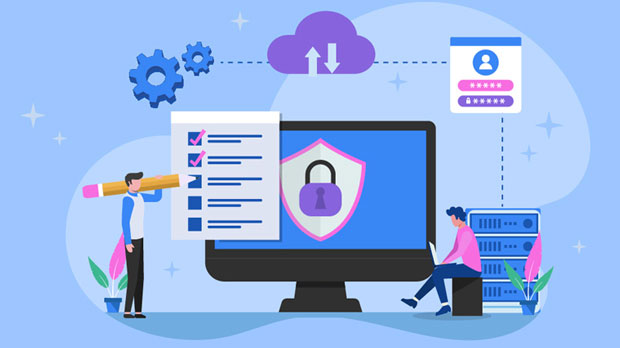When setting up a smart proxy server, choosing the right hardware and software is crucial for ensuring optimal performance, security, and scalability. A smart proxy server can provide various functionalities such as enhancing security, managing traffic, caching data, and filtering content. Selecting the appropriate hardware and software for such servers depends on factors like the scale of the network, traffic volume, security requirements, and future scalability. Understanding the Role of a Smart Proxy ServerA smart proxy server acts as an intermediary between users and the internet, performing various tasks like caching, content filtering, and providing security by masking user IP addresses. It can improve network performance by caching frequently accessed data and controlling access to resources. For businesses and large-scale operations, these servers are vital for reducing network load, enhancing user experience, and ensuring secure browsing. As such, the hardware and software selected for this role must be able to handle the traffic efficiently while offering robust security and flexibility for future scaling.Key Hardware Considerations for Smart Proxy ServersWhen selecting hardware for a smart proxy server, several critical factors must be taken into account, including processing power, memory, storage, network capacity, and redundancy. Let’s break down these considerations:1. CPU: Performance and ScalabilityThe processor (CPU) is the backbone of any server, and its performance directly impacts how well the proxy server can handle incoming requests and data processing. For a smart proxy server, especially one that handles a high volume of traffic, a multi-core processor is recommended. The CPU should have enough cores and threads to handle simultaneous connections efficiently. For small to medium-sized businesses, Intel Xeon or AMD EPYC processors can be ideal choices, offering solid performance and scalability for future growth.2. Memory (RAM): Handling Traffic and CachingRAM plays a crucial role in storing temporary data, cache, and managing multiple client requests. The more RAM a server has, the better it can handle concurrent connections and large datasets, which is especially important for caching purposes. For small-scale servers, 16 GB to 32 GB of RAM is sufficient, but for large enterprises, upwards of 64 GB or more may be required. Adequate RAM helps the server efficiently manage multiple users while minimizing response times.3. Storage: Speed and ReliabilityThe storage requirements for a smart proxy server are heavily influenced by its role in caching. Solid-state drives (SSD) are preferred due to their faster read/write speeds, which significantly improve data retrieval times for frequently accessed content. For small deployments, 500 GB to 1 TB of SSD storage should suffice, while large-scale setups might require 2 TB or more, depending on the amount of cached data and logs.4. Network Interface: Throughput and RedundancySince the core function of a proxy server is to manage network traffic, having high-throughput network interfaces is essential. A 10 Gigabit Ethernet (10GbE) interface is a minimum for large-scale operations to avoid bottlenecks. For redundancy, employing multiple network interfaces or network interface cards (NICs) can help ensure uptime in case of hardware failures, making the system more resilient.5. Redundancy and High AvailabilityTo avoid downtime, it's vital to implement redundancy in both hardware and network connectivity. This involves using failover mechanisms like RAID configurations (for data storage) and clustering techniques to ensure availability in case of hardware failures. Redundant power supplies and dual network connections can also enhance the reliability of the server.Key Software Considerations for Smart Proxy ServersOnce the hardware is selected, the next step is to choose the right software to manage the proxy server. The software determines the server’s capabilities, security features, and performance optimizations. Below are the key software components to consider:1. Proxy Server Software: Functionality and PerformanceProxy server software is crucial for handling tasks such as data caching, traffic routing, filtering, and securing client connections. Popular proxy server software options include Squid, Nginx, and HAProxy. Squid is highly configurable and used for caching and content filtering, while Nginx is renowned for its load-balancing capabilities. HAProxy excels in distributing traffic across multiple servers to ensure load balancing and redundancy.For a smart proxy server, software that offers high performance and scalability is necessary, especially for large enterprises that expect high traffic. Open-source options like Squid are cost-effective, while commercial solutions might offer more advanced features and dedicated support.2. Security Software: Protecting Data and UsersSecurity is one of the primary concerns when setting up a proxy server, as it manages the interaction between internal networks and the internet. The proxy server must be equipped with robust security software to prevent malicious attacks and unauthorized access. Common security features include SSL/TLS encryption, IP whitelisting, firewall configurations, and DDoS protection. Software such as iptables (Linux) or pfSense (an open-source firewall/router software) can help secure proxy servers. Implementing security protocols like HTTPS and using intrusion detection systems (IDS) or intrusion prevention systems (IPS) can further enhance security and prevent attacks.3. Load Balancing Software: Ensuring Optimal PerformanceLoad balancing is crucial for distributing traffic evenly across multiple proxy servers. It improves performance and prevents overload on any single server. Software like Nginx, HAProxy, or commercial solutions like F5 can be used to manage and distribute incoming traffic efficiently. Load balancing ensures that the proxy server operates at peak efficiency even during high traffic periods, preventing delays and improving the user experience.4. Monitoring and Analytics Software: Performance TrackingTo ensure optimal performance, monitoring software is essential to track server health, user activity, and traffic volume. Tools like Nagios, Zabbix, and Grafana provide real-time monitoring, helping administrators identify issues early and adjust resources accordingly. These tools also provide valuable analytics, offering insights into server performance, usage patterns, and areas that may require improvement.Selecting the right hardware and software for a smart proxy server is critical to its success. By carefully considering processing power, memory, storage, and network capacity on the hardware side, and choosing software that offers the necessary security, functionality, and scalability, businesses can ensure their proxy servers operate efficiently and securely. The right combination of hardware and software will also allow organizations to scale and adapt as their needs grow, providing long-term value and a robust solution for managing traffic, enhancing security, and optimizing network performance.
Jun 20, 2025



































































